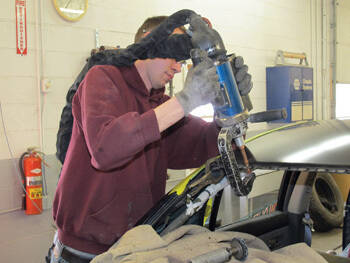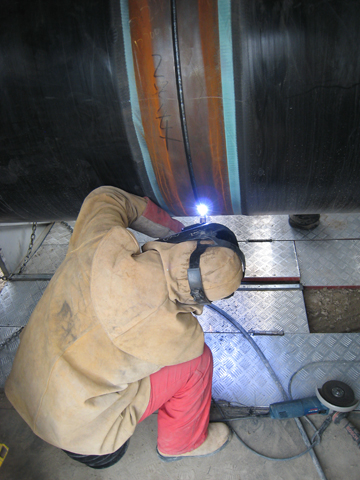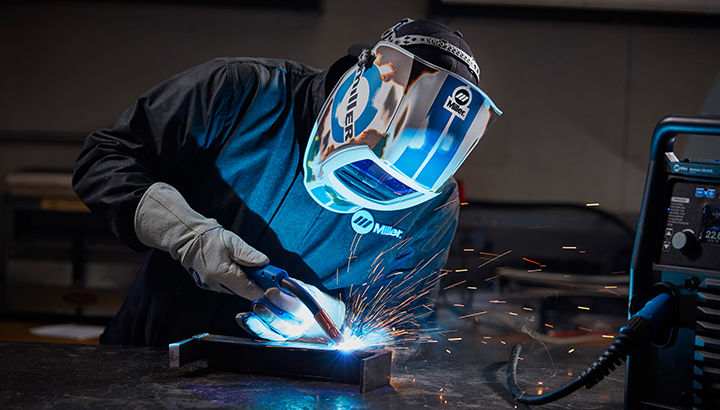Common Welding Fixing Issues and Just How to Address Them Effectively
Welding repairs commonly encounter a series of problems that can threaten the honesty of the end product. Common issues consist of insufficient penetration, porosity, and misalignment, to name a few. Each flaw offers special difficulties that require details techniques for resolution. Understanding these issues is crucial for welders aiming to improve their end results and abilities. This discussion will certainly explore these usual welding repair work concerns and reliable methods to resolve them.
Insufficient Penetration
Insufficient penetration takes place when the weld metal falls short to fully fuse with the base material, causing weak joints and prospective structural failures. This issue usually originates from not enough warm input, wrong electrode angle, or incorrect welding speed. Welders may experience poor infiltration due to a mistake of the essential criteria for a specific product thickness or kind. Furthermore, contamination on the base product's surface can hinder effective bonding, exacerbating the problem. To address poor penetration, welders must assure suitable setups on their tools and keep a clean work surface area. Normal assessment of welds is suggested to identify any type of shortages early, permitting for timely modifications and the prevention of compromised architectural honesty in welded settings up.
Porosity
Porosity is a typical defect in welded joints that materializes as little gas bubbles caught within the weld metal. This problem can compromise the integrity of the weld, bring about decreased strength and prospective failure under stress. Montana Mobile Welding and Repair Belgrade. Porosity typically arises from contamination, moisture, or incorrect welding methods, which enable gases to get away into the liquified weld swimming pool. To address porosity, welders should guarantee appropriate surface area prep work, preserve a tidy working setting, and make use of ideal welding criteria. Furthermore, choosing the ideal filler material and protecting gas can minimize gas entrapment. Regular inspection and testing of welds can assist identify porosity early, ensuring prompt corrective activities are taken, consequently protecting the high quality and dependability of the bonded structure
Misalignment
Misalignment in welding can develop from various variables, consisting of incorrect arrangement and thermal growth. Comprehending the origin is crucial for effective resolution. Several adjustment methods are readily available to realign elements and guarantee structural integrity.
Root causes of Misalignment
Welding imbalance often comes from a selection of underlying problems that can jeopardize architectural stability. One key cause is improper fit-up of parts before welding, which can bring about spaces and irregular surface areas. Variations in thermal growth during the welding process can likewise result in distortion, specifically if the products being signed up with have different coefficients of development. Additionally, inadequate fixturing and clamping might fail to hold parts safely in position, bring about movement throughout welding. Inadequately kept equipment, consisting of welding devices and tools, may introduce disparities in the weld bead, further adding to imbalance. Driver error, stemming from inadequate training or experience, can additionally play a substantial duty in developing misaligned welds.

Improvement Techniques Readily Available
Dealing with imbalance successfully calls for a mix of rehabilitative strategies customized to the particular issues at hand. One common method is the usage of components or jigs to hold elements in the proper placement throughout welding, making certain consistent placement. Furthermore, preheating the materials can assist lower distortion and enhance fit-up. For considerable imbalance, mechanical realignment techniques, such as utilizing hydraulic jacks or clamps, can be used to deal with the setting prior to welding. Post-weld heat therapy may additionally be required to alleviate stress and anxieties triggered by misalignment. Lastly, mindful inspection and change during the configuration stage can prevent misalignment issues from ending up being substantial troubles, advertising a smoother welding procedure and improving total architectural honesty.
Distortion
Distortion is a typical challenge in welding that can occur from different variables, consisting of uneven cooling and heating. Comprehending the reasons of distortion is important for carrying out reliable prevention techniques. Resolving this problem not only improves structural stability yet also boosts the general top quality of the weld.
Root causes of Distortion
When based on the extreme warmth of welding, materials typically go through adjustments that can bring about distortion. This phenomenon mostly develops from thermal growth and tightening during the welding process. As the weld location warms up, the product broadens; upon cooling, it contracts, which can produce interior tensions. Additionally, irregular heating across a workpiece can exacerbate these stress and anxieties, causing warping or flexing. The kind of material additionally plays a considerable duty; metals with varying thermal conductivity and coefficients of development might react in different ways, leading to uncertain distortions. Additionally, bad joint design and insufficient fixturing can contribute to misalignment throughout welding, enhancing the possibility of distortion. Comprehending these reasons is necessary for effective welding fixing and prevention methods.
Avoidance Techniques
Efficient avoidance techniques for distortion during welding emphasis on controlling warmth input and guaranteeing correct joint design. Maintaining a constant heat input assists to minimize thermal expansion and tightening, which can cause distortion. Utilizing methods such as preheating the work surface can Belgrade additionally minimize the temperature level slope, advertising uniform heating. In addition, picking appropriate joint designs, such as T-joints or lap joints, can improve security and reduce anxiety concentrations. Carrying out correct fixturing to safeguard the workpieces in place additionally help in preserving alignment during the welding process. Lastly, staggered welding sequences can disperse warmth extra uniformly, avoiding local distortion. By using these approaches, welders can greatly reduce the possibility of distortion and enhance the overall top quality of their welds.
Fracturing
Cracking is a common concern come across in welding fixings, often resulting from different factors such as inappropriate air conditioning prices, material option, or poor joint prep work. The event of fractures can substantially compromise the integrity of the weld, causing possible failings throughout procedure. To address this problem, welders need to first analyze the origin creates, making certain that products work and properly selected for the details application. Additionally, managing the cooling price throughout the welding procedure is essential; rapid cooling can cause stress and anxiety and result in fracturing. Correct joint layout and prep work additionally add to decreasing the danger. Carrying out these strategies can improve weld quality and resilience, inevitably reducing the probability of fracturing in finished weldments.

Insufficient Blend
A considerable concern in welding fixings is insufficient combination, which takes place when the weld metal does not properly bond with the base material or previous weld passes - Montana Mobile Welding and Repair Belgrade. This problem can result in weak points in the joint, potentially compromising the integrity of the welded framework. Variables adding to incomplete fusion consist of insufficient warm input, inappropriate welding technique, and contamination of the surfaces being joined. To resolve this issue properly, welders should ensure appropriate pre-weld cleaning and surface preparation, as well as adjust their welding parameters to achieve appropriate penetration and fusion. Regular evaluation during the welding process can also help identify insufficient blend early, permitting for prompt corrective steps to improve the total high quality of the weld
Overheating
While welding repair work can enhance architectural integrity, overheating provides a substantial challenge that can bring about material deterioration. Extreme warmth during welding can change the mechanical residential or commercial properties of steels, leading to reduced toughness, enhanced brittleness, and bending. This sensation is particularly vital in high-stress applications where architectural integrity is paramount. Identifying overheating can include aesthetic assessments for discoloration or distortion, along with keeping an eye on temperature throughout the welding process. To minimize the threats connected with overheating, welders need to employ ideal methods, such as regulating heat input, changing traveling rate, and utilizing ideal filler materials. In addition, implementing pre- and post-weld warm treatments can aid recover product buildings and enhance the overall top quality of the repair work, making certain long-term performance and security.
Often Asked Inquiries
What Are the Common Indicators of a Welding Defect?

How Can I Evaluate My Welds for Quality?
To test welds for quality, one can use aesthetic inspections, ultrasonic testing, and radiographic methods. Each technique assures structural honesty, identifies issues, and validates adherence to specified standards, ultimately enhancing the integrity of the welded joints.
What Safety Preventative Measures Should I Take While Welding?
When welding, one should focus on safety by putting on suitable individual protective devices, making certain proper air flow, safeguarding flammable materials away, keeping a clean office, and being aware of environments to prevent mishaps and injuries.
Can I Fix a Weld Without Redoing the Entire Joint?
Repairing a weld without remodeling the entire joint is possible, depending on the damage (Welding). Techniques such as grinding, including filler product, or using a welding process can efficiently resolve specific imperfections while maintaining the surrounding structure
What Equipment Are Essential for Efficient Welding Repair Works?
Necessary tools for effective welding repair services include a welding maker, cable brush, mill, safety gear, clamps, and filler products. Each tool plays a vital role in guaranteeing quality and safety and security during the repair service procedure. Porosity typically develops from contamination, dampness, or inappropriate welding techniques, which permit gases to leave into the liquified weld swimming pool. Improperly kept tools, consisting of welding makers and devices, might present disparities in the weld grain, more contributing to imbalance. When subjected to the extreme warmth of welding, materials typically undergo adjustments that can lead to distortion. Splitting is a common concern come across in welding fixings, frequently resulting from various aspects such as incorrect cooling rates, product option, or insufficient joint preparation. A substantial issue in welding repair work is incomplete fusion, which happens when the weld metal does not properly bond with the base product or previous weld passes.